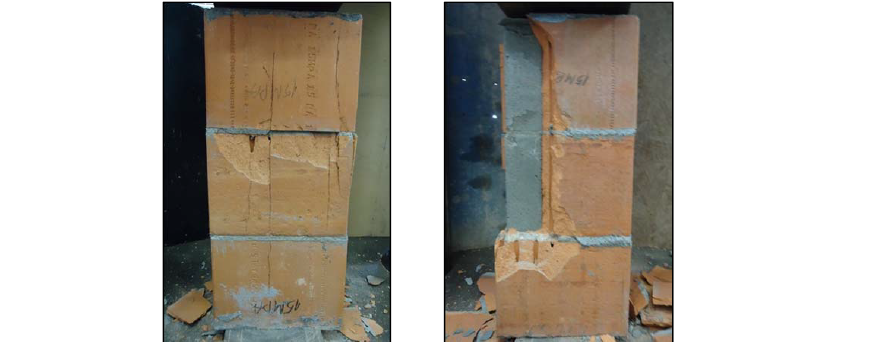1 MSc, PhD candidate, Federal University of Santa Catarina, Civil Engineering Department,
marcioprojetos@hotmail.com
2 MSc, PhD candidate, Federal University of Santa Catarina, Civil Engineering Department, morato@uel.br
3 MSc, PhD candidate, Federal University of Santa Catarina, Civil Engineering Department,
vivianymelchior@hotmail.com
4 PhD, Professor, Federal University of Santa Catarina, Civil Engineering Department, humberto@ecv.ufsc.br
ABSTRACT
Grout has been used to increase the compressive strength of clay blockwork structural masonry. The new Brazilian standard for clay blockwork, ABNT NBR 15812-2 (2010), seeking greater speed of construction and flexibility for such process, allows the using of mortar to replace grout in non-reinforced masonry units. The implications of this change demand researches on the behavior of masonry units when filled with mortar. Thus, this article aims to evaluate the effectiveness of prisms infilled with mortar instead of grout. For this study, three types of mixed mortars (1: ¼ : 3; 1 : ½ : 4,5; 1 : 1 : 6) and three types of clay blocks were used. The nominal compressive strength of the blocks is of 6, 12 and 15 MPa. Preliminary results of compressive strength of the constructed prisms revealed the technical feasibility of using mortar as infilling material in substitution to grout.
KEYWORDS:clay blockwork, structural masonry, mortar, grout, prism, effectiveness
209.pdf



